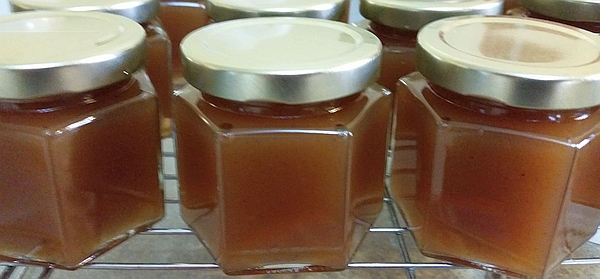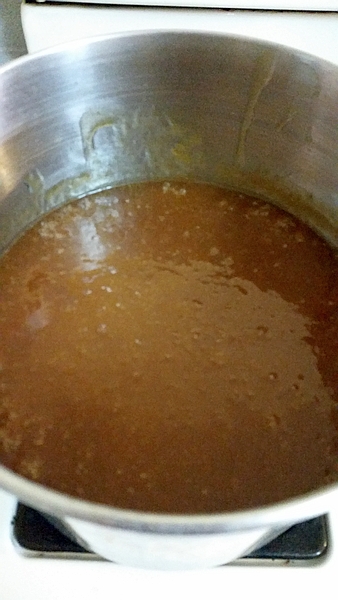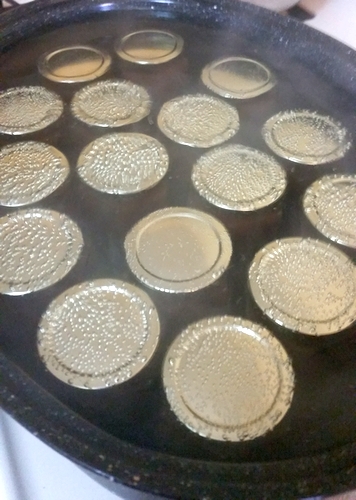Apple Cider Jelly
Growing up, apple jelly on a toasted English muffin was one of my favorite breakfasts. When I discovered a recipe for apple cider jelly on the internet a few years ago I knew it was going to be my new favorite. I bought a gallon of fresh pressed cider and got to work. It took me several tries to get apple cider jelly right, and we ate a lot of ice cream with apple cider topping (code for jelly that didn’t set up). Apple jelly from the crab apples on my ancient tree was much easier. I couldn’t figure it out.
A neighbor came to pick apples and we talked about my apple cider jelly problem compared to the simple, dependable apple jelly. “Do you simmer peels in the pot,” she asked? I didn’t. I learned that day that there’s a lot of pectin in apple peels. I peel two apples, simmer the peeling in the cider, and remove the peels before pouring the jelly into jars. Problem solved.
Apple Cider Jelly Recipe
4 cups apple cider of good quality
3 cups sugar
2 oz pectin
Peelings from two medium apples
(Optional) 1-2 teaspoons apple pie spice or a combination of cinnamon, nutmeg, cardamom
Add the peels to the cider at the start.
Mix spices into sugar if you’re going to make spiced apple cider jelly.
Methods of making jelly and jam vary between brands of pectin. Follow the directions provided in your pectin. Remove peels before pouring the jelly into jars.
 Old school canning told us to fill the jars, cover the jelly with paraffin wax and allow to cool before adding a cover. Another formerly accepted method didn’t use paraffin. We tightened the jar lid and turned the jars upside down until they sealed. We know now that these aren’t the best methods. You’ll find great information including how to hot water bath your jelly in Preserving With Pomona’s Pectin by Allison Carroll Duffy.
Old school canning told us to fill the jars, cover the jelly with paraffin wax and allow to cool before adding a cover. Another formerly accepted method didn’t use paraffin. We tightened the jar lid and turned the jars upside down until they sealed. We know now that these aren’t the best methods. You’ll find great information including how to hot water bath your jelly in Preserving With Pomona’s Pectin by Allison Carroll Duffy.
A homemade biscuit or English muffin with a pat of homemade butter and jelly or jam is one of my favorite breakfasts in winter.




